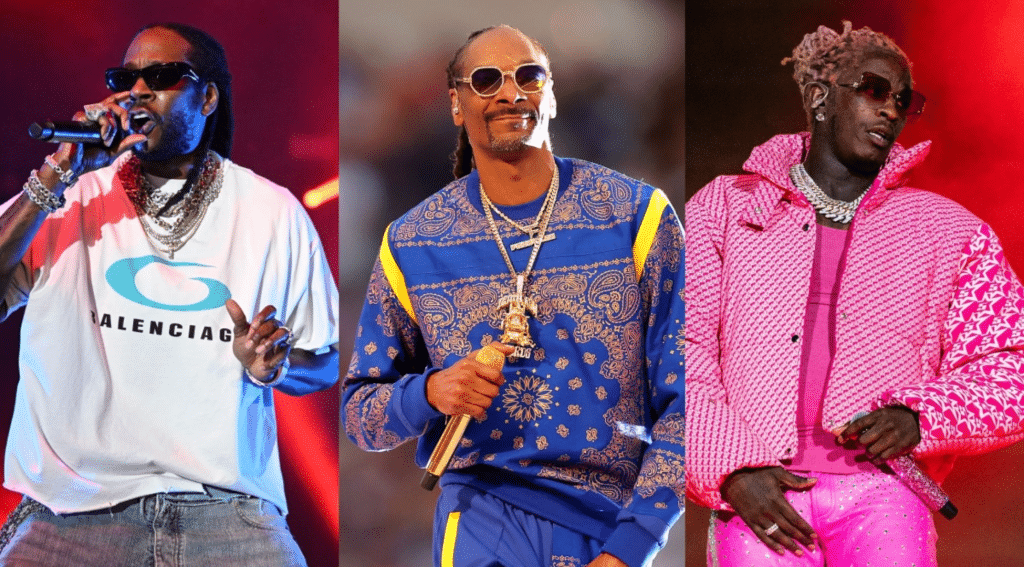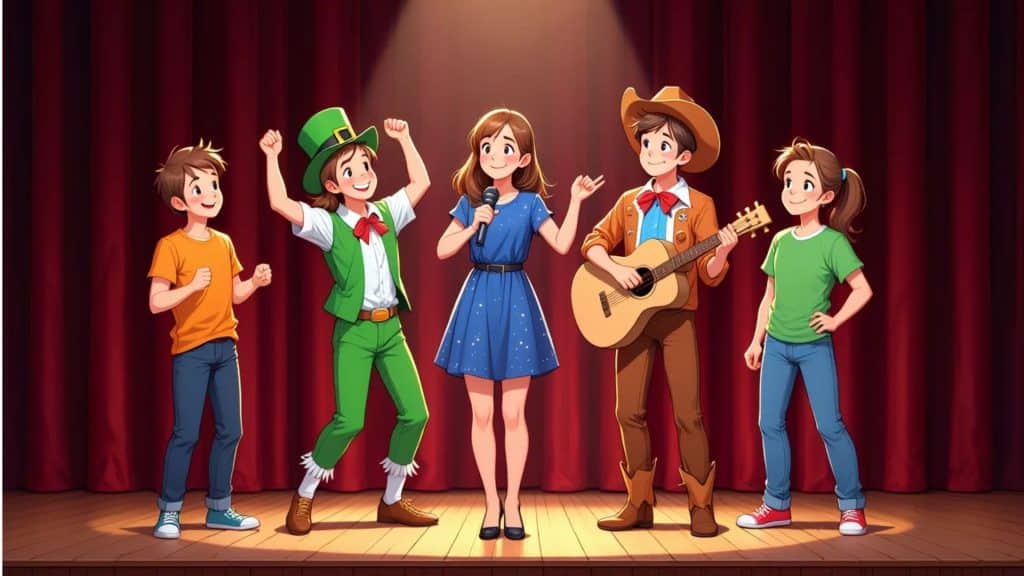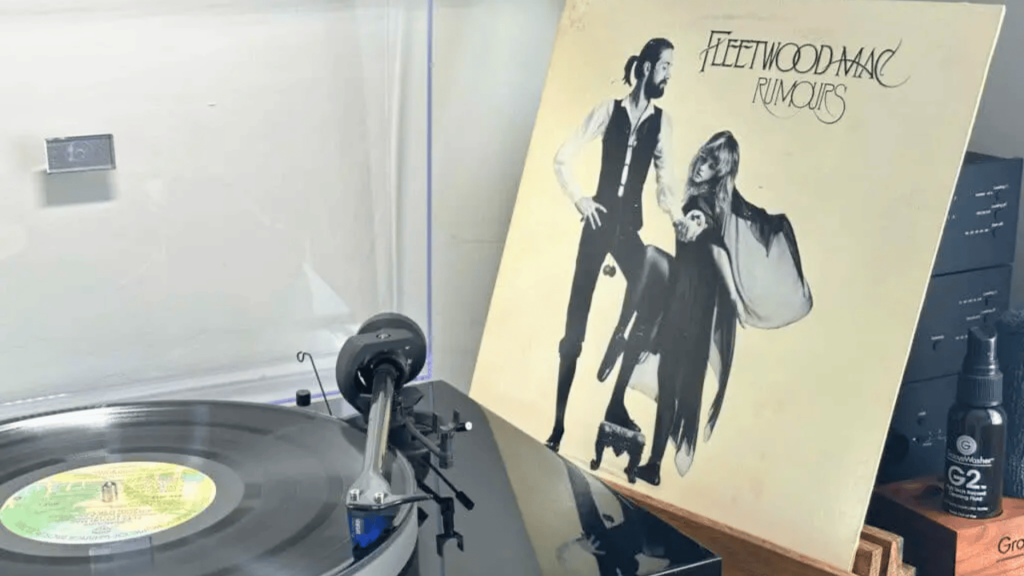Have you ever wondered what the largest rock concert ever looked like? Maybe you’re curious about which bands pulled the biggest crowds in history, or if Woodstock even makes the cut.
I’ve curated the most jaw-dropping shows and festivals from around the world, so you don’t have to sift through random lists. In this guide, you’ll find the biggest rock concerts, record-breaking festivals, and upcoming mega-events in 2025 and 2026.
You’ll see what made these moments so unforgettable and why the numbers still blow people’s minds. Ready to find out who rocked the world the hardest?
The Top Largest Rock Concerts of All Time
Find the most massive rock concerts in history, featuring legendary artists, unbelievable crowd sizes, iconic venues, and unforgettable performances that changed live music forever.
1. Rod Stewart: Copacabana Beach, 1994 (3.5 Million)
Rod Stewart’s New Year’s Eve performance in Rio de Janeiro attracted a jaw-dropping 3.5 million fans to Copacabana Beach. The event was free and part of a public celebration, blending music and midnight fireworks.
It’s widely recognized as the largest concert crowd ever recorded. This show earned a Guinness World Record and remains unmatched in terms of attendance at a single-artist concert in one location, especially for a non-ticketed, open-air venue.
2. Jean-Michel Jarre: Moscow, 1997 (3.5 Million)
Electronic music pioneer Jean-Michel Jarre drew a reported 3.5 million people to Moscow’s State University for his “Oxygene in Moscow” show. The event celebrated the 850th anniversary of the city and featured lasers, projections, and grand visuals across multiple buildings.
It was a massive state-backed celebration and often tied with Rod Stewart’s show as the largest concert ever, although some classify it more as a multimedia performance than a traditional rock concert.
3. Metallica: Tushino Airfield, Moscow, 1991 (1.6 Million)
Metallica headlined the “Monsters of Rock” festival in Moscow just after the fall of the Soviet Union. Held at the Tushino Airfield, the concert drew an estimated 1.6 million attendees.
It was one of the first major Western rock performances in post-Soviet Russia and became a symbol of cultural shift and youth rebellion. Despite being a festival, Metallica’s performance is most remembered and credited with driving the crowd to record-breaking levels.
4. The Rolling Stones: Copacabana Beach, 2006 (1.5 Million)
The Rolling Stones played a free beachside concert in Rio de Janeiro in 2006 that brought in about 1.5 million people. Like Rod Stewart’s earlier show, this was a free event and broadcast live.
The stage was set up right on the sand, with massive screens for distant viewers. This concert proved the Stones’ global appeal and helped solidify Copacabana Beach as one of the most iconic large-scale concert venues in the world.
5. Paul van Dyk: Love Parade, Berlin, 2008 (1.5 Million)
While primarily electronic, Paul van Dyk’s set at Berlin’s Love Parade in 2008 attracted approximately 1.5 million attendees. Though not a standalone concert, this single performance stood out in a parade-style music festival.
Set across streets and open boulevards, the event became a symbol of music uniting people across Europe. The attendance rivaled that of major rock events, showing that crowd size isn’t exclusive to traditional rock and roll.
6. Oasis: Knebworth Park, 1996 (500,000)
Oasis performed two legendary shows at Knebworth Park, England, in August 1996, drawing a combined audience of 500,000. Tickets sold out in under 24 hours, with more than 2.5 million people reportedly trying to buy them.
These performances marked the peak of Britpop and became a defining moment in UK rock history. Despite the venue’s limited capacity, the event’s cultural footprint remains massive, and it’s remembered as a milestone in 1990s rock.
7. Queen: Hyde Park, London, 1976 (200,000)
Queen played a free concert in Hyde Park, London, in 1976 for an estimated 200,000 fans. It was one of the band’s early monumental shows and came right before the release of their album A Day at the Races.
The performance helped solidify Queen’s rise to superstardom. Despite security concerns and limited amplification for such a large crowd, the event is still remembered as one of the UK’s biggest rock moments.
What’s the Biggest Rock Concert Ever?
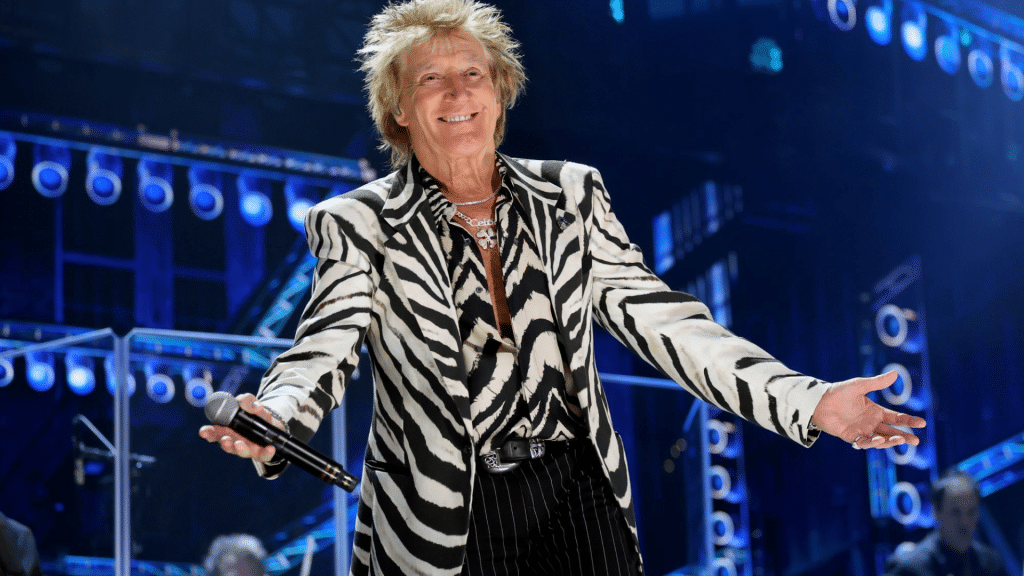
The largest rock concert ever was Rod Stewart’s New Year’s Eve performance on Copacabana Beach in Rio de Janeiro, Brazil, on December 31, 1994.
The event drew an estimated 3.5 million people, combining fans of the singer with beachgoers there for the city’s midnight fireworks.
Because it was a free, open-air show, the crowd size surpassed every ticketed concert in history. Guinness World Records recognized the concert, and it remains unmatched in terms of sheer public attendance at a single-artist rock event.
The Biggest Music Festivals in the World
The world’s most massive music festivals are known for huge crowds, diverse lineups, global impact, and unforgettable multi-day live experiences.
Rock in Rio (Brazil)
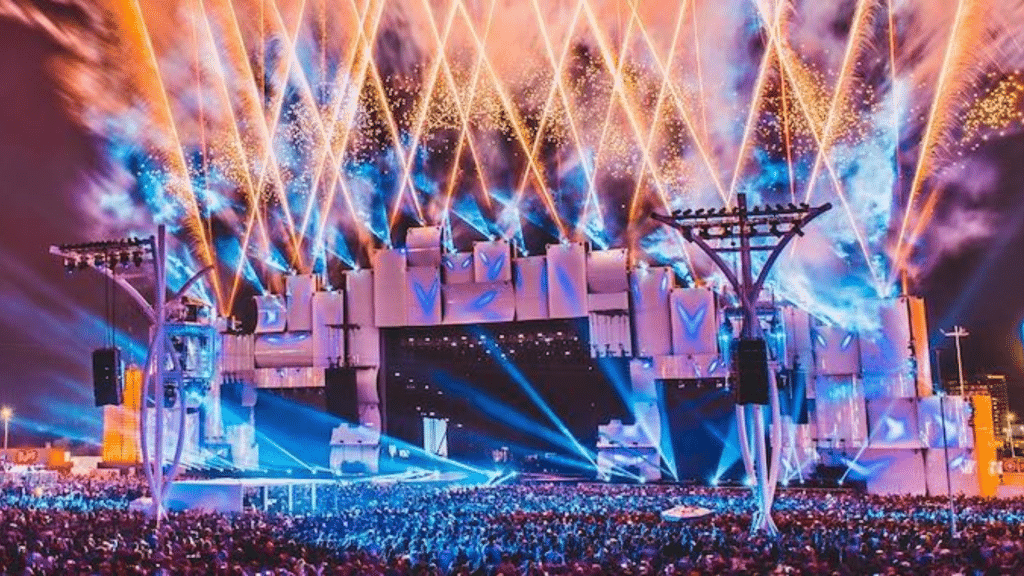
Held in Rio de Janeiro, Rock in Rio attracts over 700,000 fans per edition. It spans multiple days and features international rock, pop, and metal acts.
Known for massive stages and star-studded lineups, it’s one of the most recognized festivals worldwide and has expanded to cities like Lisbon and Madrid, bringing global music together.
Glastonbury (UK)
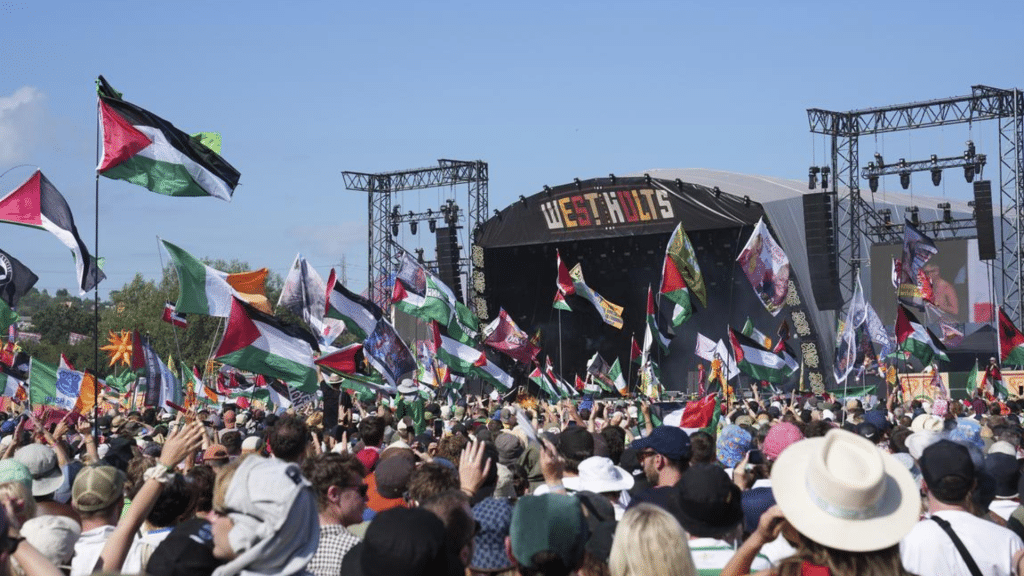
Glastonbury welcomes around 200,000 attendees to its iconic Worthy Farm setting in Somerset, England. It blends music with arts, activism, and culture.
Known for its eclectic lineups and muddy fields, the festival has hosted legends across decades, from David Bowie to Beyoncé. Tickets sell out quickly despite its large size, showing its enduring popularity.
Coachella (USA)

Held in California’s Colorado Desert, Coachella draws about 250,000 over two weekends. It’s famous for fashion trends, viral performances, and A-list artist headliners.
The festival mixes mainstream and indie acts with art installations, making it both a musical and visual experience. Its influence on pop culture and social media reach is unmatched in the U.S.
Summerfest (USA)
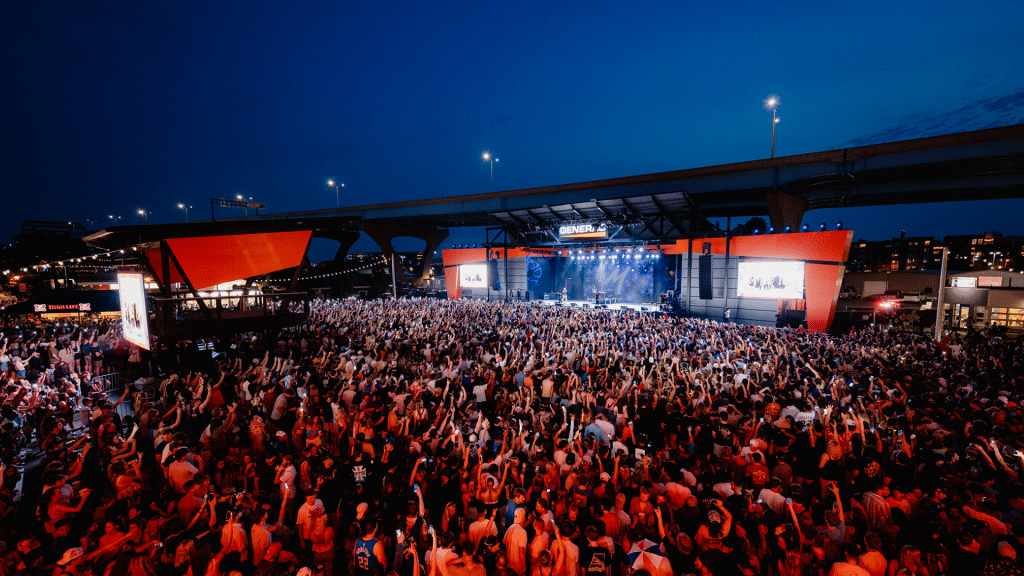
Located in Milwaukee, Wisconsin, Summerfest spans 11 days and attracts roughly 800,000 people each year. It holds the title of “World’s Largest Music Festival” by Guinness for ticketed multi-day events.
The lineup spans genres, rock, country, hip-hop, and more, across 12 stages. It’s family-friendly and deeply tied to Midwest music culture and summer tradition.
Donauinselfest (Austria)
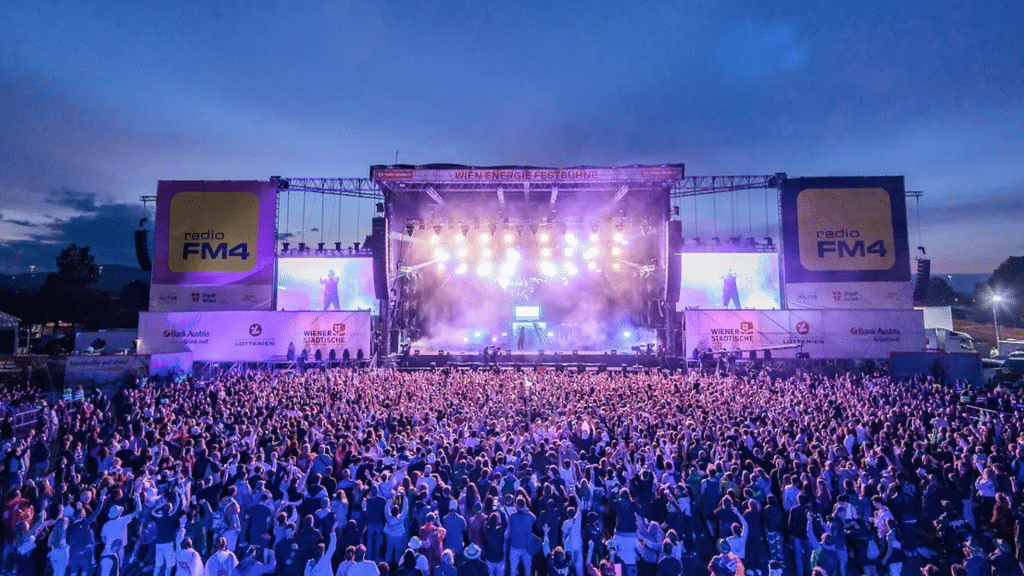
Vienna’s Donauinselfest is often the most attended free music festival in the world, drawing over 2 million people. Set on Danube Island, it features international and local artists across dozens of stages.
The festival combines rock, pop, folk, and dance music with a vibrant atmosphere and scenic river views, all open to the public.
Concert vs. Festival: What’s the Difference?
While both offer live music experiences, concerts and festivals differ in structure, purpose, and audience size. Here’s how they compare at a glance:
|
Feature |
Concert |
Festival |
|
Format |
Usually features a single headlining artist |
Includes multiple artists over one or more days |
|
Duration |
Typically lasts a few hours |
Can span a full day or multiple days |
|
Lineup |
One main act, sometimes with an opener |
Dozens of performers across various stages |
|
Audience Size |
Varies by venue size |
Often designed for large outdoor crowds |
|
Ticket Type |
Mostly paid admission |
Can be paid, free, or partially ticketed |
|
Purpose |
Focused on a specific artist or tour |
Celebration of music, culture, and community |
|
Attendance Counted By |
Tickets sold or venue capacity |
Estimated over days or stages, often harder to track |
Concerts are generally more focused and structured, while festivals offer variety, longer experiences, and a more communal atmosphere. Both hold essential places in live music culture.
Upcoming Mega Concerts and Festivals in 2025–2026
Get ready for epic, large-scale artist tours and major festivals across regions, many poised to break attendance or cultural records worldwide.
- Lollapalooza 2025 (Chicago, July 31 onward): Multi-day festival likely drawing hundreds of thousands across stages and genres.
- Hardly Strictly Bluegrass 2025 (San Francisco, Oct 3–5): Free, community festival expanding in scale for its 25th anniversary.
- Afro Nation Portugal 2025 (July 9–11): Returning to Praia da Rocha with headliners like Burna Boy and Tems over three days.
-
Outlaw Music Festival 2025: Willie Nelson and Bob Dylan co-headlining US tour leg, reaching major regional outdoor venues.
Conclusion
Now you’ve got the full story behind the largest rock concert ever, and so many more historic shows and festivals worth knowing. If you’re into one-artist mega shows or multi-day music marathons, you’ve seen how these events made music history.
I hope this gave you some wild facts to share, and maybe even a few new concerts to look forward to. Just remember, what makes a show legendary isn’t always the size; it’s the moment.
If you’re curious about more music records or festival guides, go check out my other posts. There’s plenty more to dig into.




